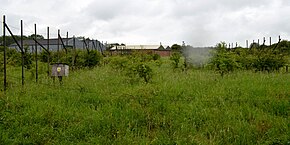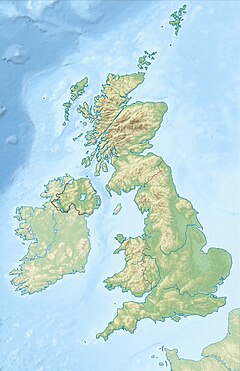Interplanetary Scintillation Array
This article needs additional citations for verification. (July 2017) |
 | |
| Part of | Mullard Radio Astronomy Observatory |
|---|---|
| Location(s) | Cambridge, Cambridgeshire, East of England, England |
| Coordinates | 52°09′47″N 0°02′04″E / 52.16315°N 0.034354°E |
| Organization | Mullard Radio Astronomy Observatory |
| Telescope style | radio telescope |
| | |

The Interplanetary Scintillation Array (also known as the IPS Array or Pulsar Array) is a radio telescope that was built in 1967 at the Mullard Radio Astronomy Observatory, in Cambridge, United Kingdom, and was operated by the Cavendish Astrophysics Group. The instrument originally covered 4 acres (16,000 m²). It was enlarged to 9 acres in 1978, and was refurbished in 1989.
The array operates at a radio frequency of 81.5 MHz (3.7 m wavelength), and is made up of 4,096 dipole antennas in a phased array. Using 14 beams, it can map the northern sky in one day. The observatory's staff use sheep to keep grass away from the antennas because a lawn mower cannot fit in the spaces.
Antony Hewish designed the IPS Array to measure the high-frequency fluctuations of radio sources, originally for monitoring interplanetary scintillation. Hewish received a Nobel prize after the high time-resolution of the array allowed the detection of pulsars by Jocelyn Bell in 1967.[1]
The IPS Array has more recently been used to track and help forecast interplanetary weather, and specifically to monitor the solar wind. It is now essentially retired, and has lost a significant fraction of its area.
References
- ^ "The First Pulsar". Astrobites. 15 September 2017.

